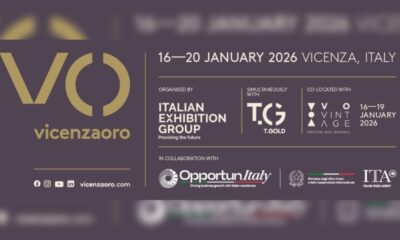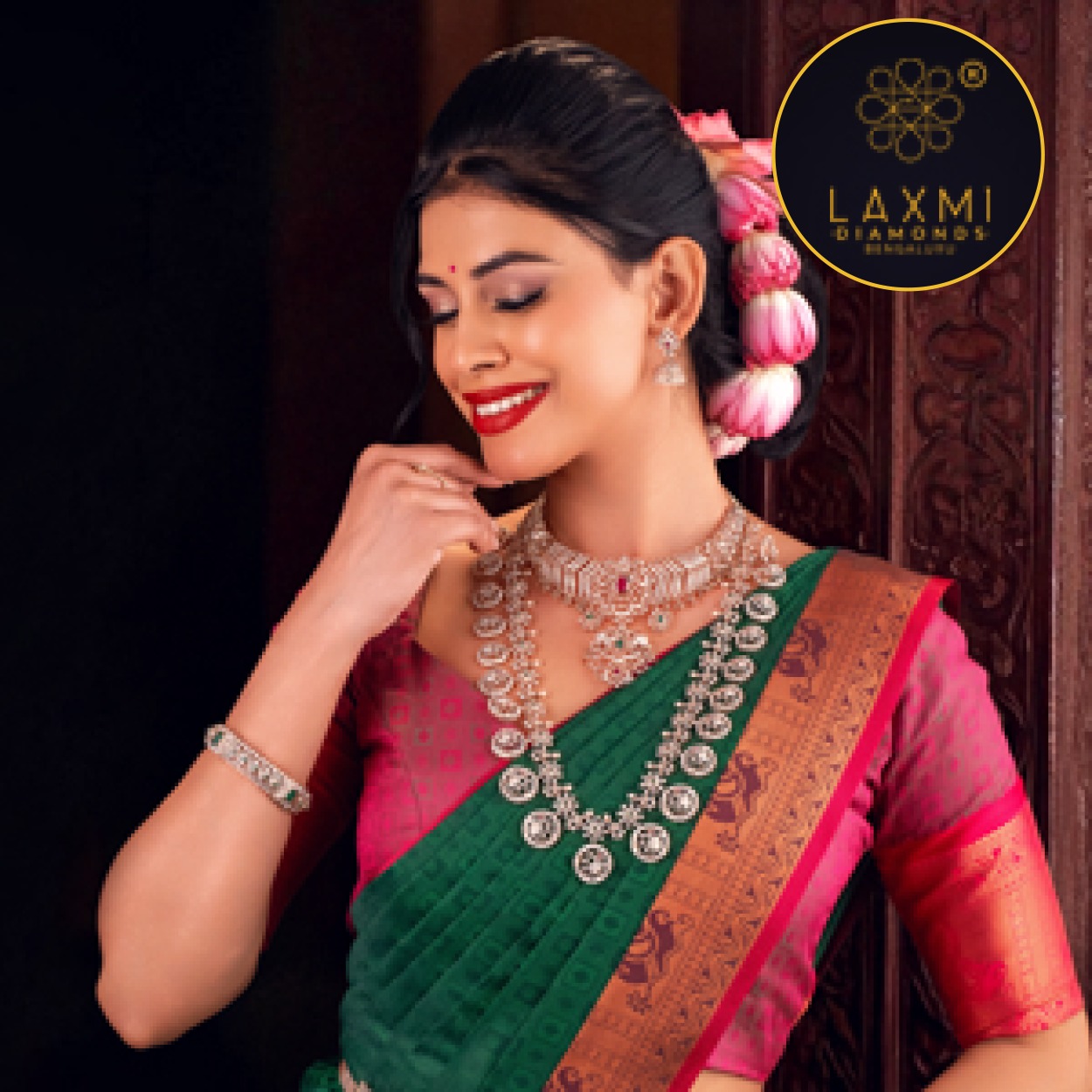JB Insights
WGC Gold Demand Trends : Gold breaks records as investors seek shelter from market turbulence
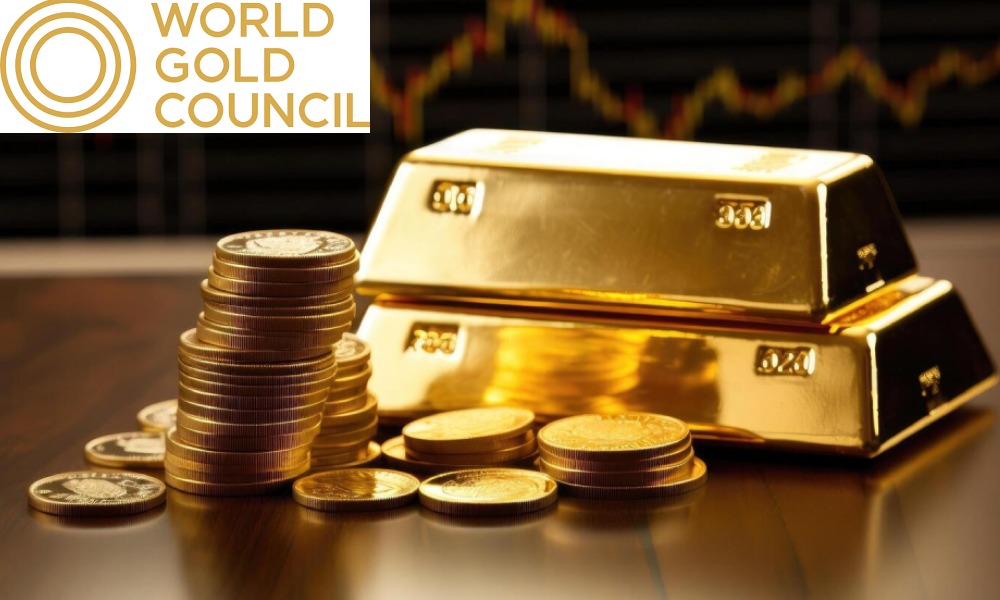
The World Gold Council’s Q3 2025 Gold Demand Trends report reveals that quarterly gold demand (including OTC) reached 1,313t, or US $146bn in value terms and was the highest quarter for demand on record.
Growth was driven primarily by investment demand which accelerated in Q3 reaching 537t (+47% y/y) and accounted for 55% of overall net gold demand. This momentum was driven by a powerful combination of an uncertain and volatile geopolitical environment, US dollar weakness and investor “FOMO” as the price climbed higher.
Investors continued to pile into physically backed gold ETFs for a third consecutive quarter, adding a further 222t with global inflows reaching US$26bn. Year-to-date, gold ETFs have added a total of 619t (US$64bn) to their holdings with North American listed funds leading the charge (346t), followed by European (148t) and Asian funds (118t).
Bar and coin investment rose 17% y/y, totalling 316t, with growth in almost all markets but with significant contributions from India (92t), China, (74t).
On the other hand, gold jewellery demand was weighed down by 50 record gold prices this year, seeing a 19% y/y decline in consumption for Q3. While the two largest consumer markets – India and China – both saw a quarter-on-quarter uplift, largely due to seasonal factors, the y/y picture across both markets remained weak.
Central banks picked up the pace in Q3 with net purchases totalling 220t in the third quarter, up 28% on Q2 and 10% y/y, despite the record-high gold price. On a year-to-date basis, net buying totalled 634t, trailing behind the exceptional highs of the last three years, but comfortably above pre-2022 levels.
Total gold supply reached a quarterly record of 1,313t, up 3% y/y. Mine production increased by 2% y/y to 977t while recycling was up 6% y/y at 344t, staying relatively stable given the soaring gold price.

Louise Street, Senior Markets Analyst at the World Gold Council, commented:
“Gold’s climb towards US$4,000/oz in the third quarter underscores the strength and persistence of the factors that have been driving demand throughout the year. Heightened geopolitical tensions, stubborn inflationary pressures and uncertainty around global trade policy have all fuelled appetite for safe-haven assets as investors look to build resilience in their portfolios.
“The outlook for gold remains optimistic, as continued US dollar weakness, lower interest rate expectations, and the threat of stagflation could further propel investment demand. Gold has set record after record this year, and the current environment suggests there could be more upside gains for gold. Our research indicates the market is not yet saturated, and the strategic case to hold gold remains firmly in place.”
Sachin Jain, Regional CEO, India, World Gold Council said:
“India’s gold market in Q3 2025 showcased its inherent resilience and the significant impact of evolving price dynamics. While total gold value surged impressively by 23% to Rs. 2,03,240 crores, gold demand volumes saw a 16% decline to 209.4 tonnes. This robust growth in value, driven by high average prices, strongly reaffirms gold’s enduring appeal as a safe-haven asset. Investment demand, showed remarkable strength, increasing 20% in volume to 91.6 tonnes and a significant 74% in value to Rs. 88,970 crores.

This highlights a deepening strategic commitment among Indian consumers to gold as a long-term store of value. While jewellery demand saw a 31% volume decrease to 117.7 tonnes, its value remained largely stable at Rs. 1,14,270 crores. This indicates that despite higher prices, gold’s intrinsic cultural significance continues to drive purchases, with consumers adapting to the new price levels.
On the supply side, gold imports were 194.6 tonnes, down 37%, while recycling saw a modest 7% decline to 21.8 tonnes, suggesting consumers are holding onto their prized asset. Looking ahead, the current festive and wedding seasons are pivotal for the yellow metal. Gold’s unique cultural significance means festivals traditionally drive strong buying interest. Despite prevailing high prices, consumer sentiment remains positive, and retailers are well-prepared. We anticipate robust demand across all categories, from traditional jewellery to investment products, as the market gears up for a vibrant festive and wedding season. With total gold demand from January to September at approximately 462.4 tonnes, we anticipate full-year demand between 600 and 700 tonnes, more towards higher end of range.“
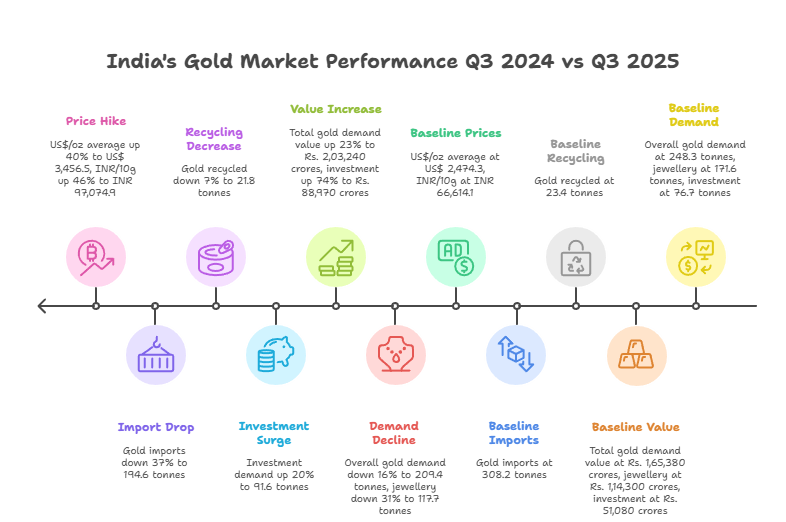
Gold Demand Trends Q3 2025 India Fact Sheet: India Gold Demand Statistics for Q3 2025 (July – September)
- Demand for gold in India for Q3 2025 was at 209.4 tonnes, down by 16% as compared to overall Q3 demand for 2024 (248.3 tonnes)
- India’s Q3 2025 gold demand value was Rs. 2,03,240 crores, up by 23% as compared to Q3 2024 (Rs.1,65,380 crores)
- Total Jewellery demand in India for Q3 2025 decreased by 31% to 117.7 tonnes as compared to Q3 2024 (171.6 tonnes)
- The value of jewellery demand remained rather unchanged at Rs. 1,14,270 crores, compared to Rs. 1,14,300 crores recorded in Q3 2024
- Total Investment demand for Q3 2025 was at 91.6 tonnes, increased by 20% in comparison to Q3 2024 (76.7 tonnes)
- In value terms, gold Investment demand in Q3 2025 was Rs. 88,970 crores, up by 74% from Q3 2024 (Rs. 51,080 crores)
- Total gold recycled in India in Q3 2025 was 21.8 tonnes, down by 7% compared to 23.4 tonnes in Q3 2024.
- Total gold imports in India in Q3 2025 was 194.6 tonnes, down by 37% compared to 308.2 tonnes in Q3 2024.
- US$/oz average quarterly price in Q3 2025 was US$ 3,456.5 in comparison to US$ 2,474.3 in Q3 2024.
- INR/10g average quarterly price in Q3 2025 was INR 97,074.9 in comparison to INR 66,614.1 in Q3 2024 (without import duty and GST)
Education
Natural and Lab-Grown Diamonds: Two Sparkling Paths Defining the Future of Luxury Jewellery”

The diamond landscape is evolving faster than ever. As technology meets tradition, Natural and Lab-Grown Diamonds are redefining how consumers, retailers, and brands perceive luxury. Both share identical chemical and optical properties, yet their origins, pricing, sustainability factors, and emotional appeal set them apart.
With the global diamond market at a turning point, understanding these distinctions helps both jewellery buyers and industry professionals make informed decisions in 2025 and beyond.
From the Earth’s Depths to Cutting-Edge Labs

Natural diamonds are formed over billions of years deep within the Earth’s mantle under immense heat and pressure. They emerge through volcanic activity and are then mined, cut, and polished before reaching the consumer.
In contrast, lab-grown diamonds (LGDs) are created inside advanced laboratories using High Pressure High Temperature (HPHT) or Chemical Vapor Deposition (CVD) technology. These processes replicate natural conditions, producing diamonds that are chemically, physically, and optically identical to those mined from the Earth — but grown in a matter of weeks.
Appearance and Durability: Identical in Every Sparkle

Both natural and lab-grown diamonds score a perfect 10 on the Mohs hardness scale, meaning they are equally durable, brilliant, and suitable for everyday wear. Even expert gemologists require specialized instruments to distinguish between the two.
Modern certification authorities such as GIA, IGI, and SGL ensure complete transparency by clearly mentioning whether a diamond is natural or lab-created on its grading report — maintaining consumer trust and industry integrity.
Pricing and Market Accessibility
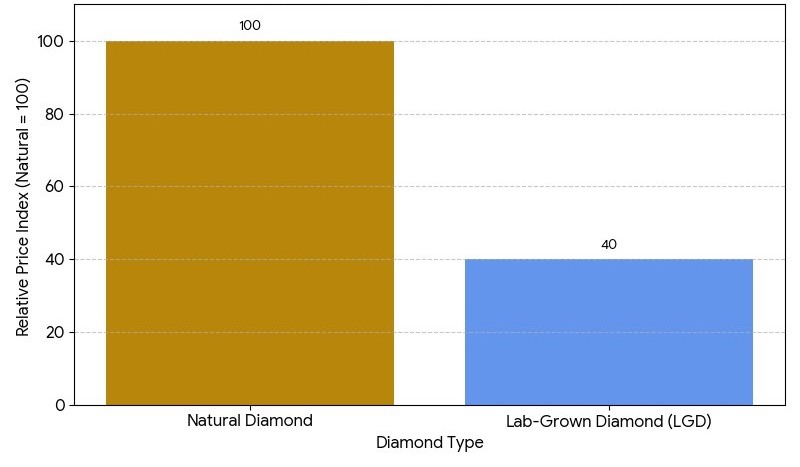
One of the most defining aspects of lab-grown diamonds is affordability. On average, they cost 50–80% less than natural diamonds of similar size and quality. This has opened the luxury jewellery market to younger, value-conscious consumers, particularly Millennials and Gen Z, who view LGDs as sustainable and budget-friendly choices.
However, natural diamonds continue to command premium value due to their rarity, heritage, and perceived emotional depth — making them a timeless investment for collectors and traditional buyers.
Sustainability and Ethics in Focus
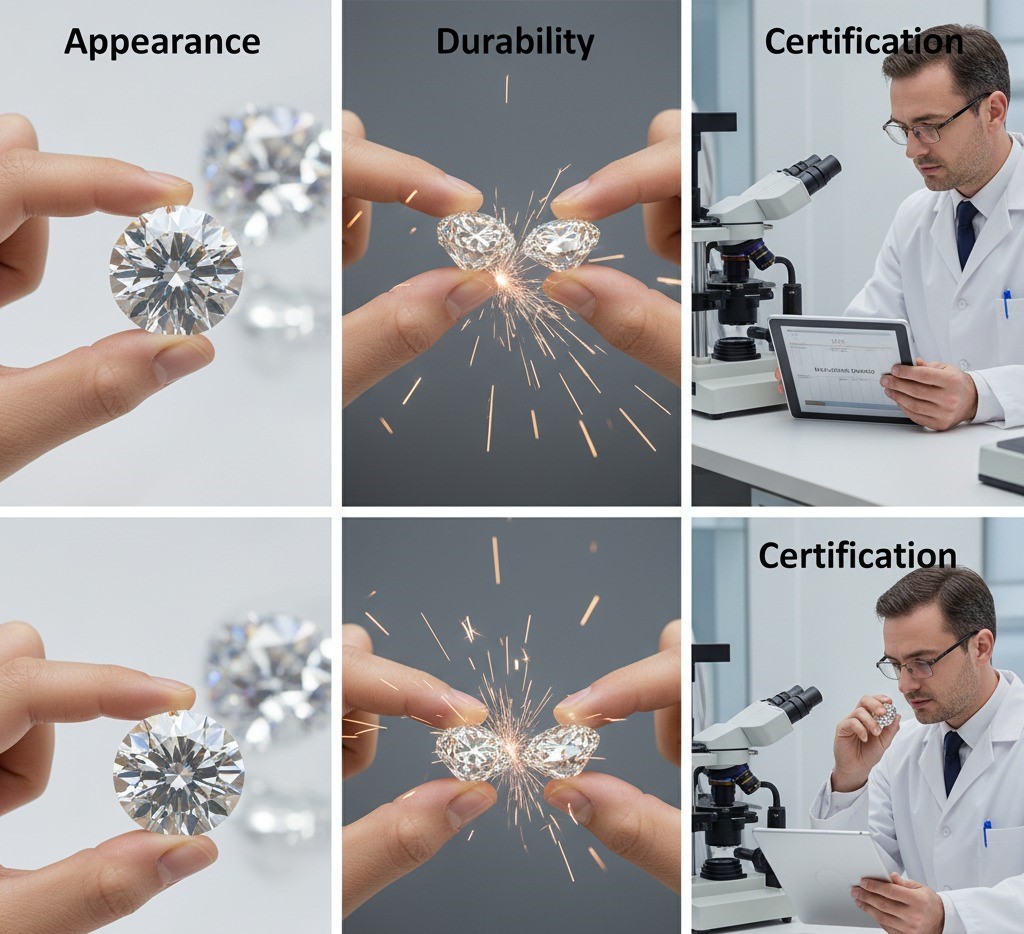
In today’s conscious consumer era, sustainability and ethical sourcing play a critical role in purchase decisions. Lab-grown diamonds have gained popularity for their minimal environmental footprint and traceable production methods.
Meanwhile, leading natural diamond mining companies have advanced significantly in eco-restoration, carbon reduction, and community programs, ensuring responsible mining practices. As both sectors innovate, the diamond industry as a whole is moving toward greater transparency and social responsibility.
India’s Pivotal Role in the Diamond Evolution

India, particularly Surat, has emerged as the global hub for lab-grown diamond production, driving exports and technological innovation. According to trade data, lab-grown diamond exports from India have surged sharply in 2025, solidifying the nation’s role as a world leader in both natural and synthetic diamond expertise.
Retailers across India are now offering dual counters — one for natural diamonds and another for lab-grown — to cater to the evolving preferences of modern consumers.
Changing Consumer Perceptions

The perception of lab-grown diamonds has shifted dramatically. Once viewed as “alternatives,” they are now celebrated as symbols of modern luxury and sustainability. However, natural diamonds continue to represent heritage, emotion, and exclusivity — values deeply rooted in the cultural and emotional fabric of jewellery buying.
The brilliance of a diamond, whether mined from the Earth or grown in a lab, remains eternal. The difference lies not in its sparkle, but in the story it tells — one of timeless beauty versus technological innovation.
As the jewellery industry embraces both, the future of diamonds is not about choosing one over the other — it’s about celebrating diversity, transparency, and conscious luxury.
-
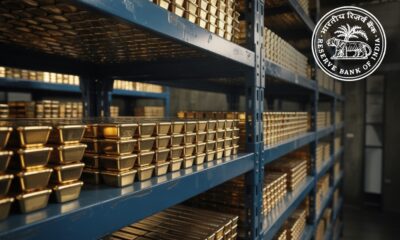
 National News5 hours ago
National News5 hours agoRBI accelerates repatriation of its gold reserves, 64 ton brought home last 6 months
-
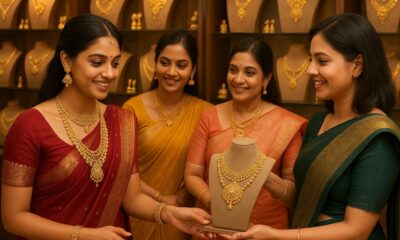
 National News6 hours ago
National News6 hours agoGold price decline will stimulate shopping during November-March wedding season
-
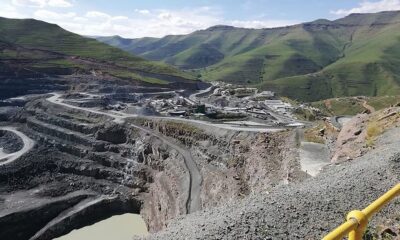
 DiamondBuzz3 hours ago
DiamondBuzz3 hours agoLesotho’s Largest Diamond Mine Faces Imminent Closure Without State Tax Relief
-

 Education3 hours ago
Education3 hours agoNatural and Lab-Grown Diamonds: Two Sparkling Paths Defining the Future of Luxury Jewellery”




